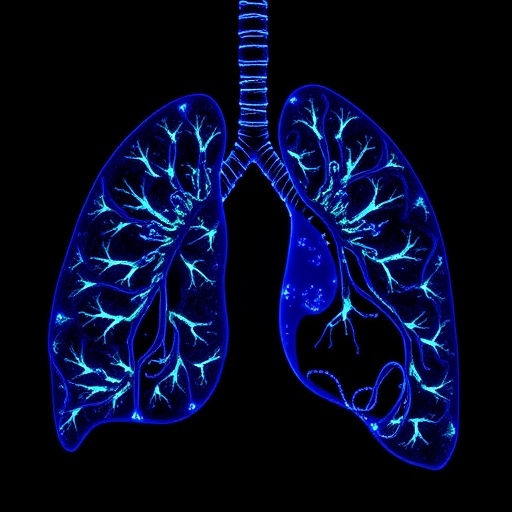In the face of escalating chronic disease prevalence in the United States, healthcare systems confront significant challenges in managing patient outcomes effectively, particularly regarding hospital readmissions and prolonged stays. Heart failure remains a leading driver of these challenges, with nearly 25% of patients experiencing hospital readmission within 30 days after discharge. Despite robust clinical evidence supporting the efficacy of comprehensive guideline-directed medical therapies, less than one-fifth of heart failure patients receive all recommended treatment pillars post-discharge, underscoring a critical gap in continuity of care.
This gap in post-hospitalization care is particularly troubling given the predicted doubling of patients living with chronic illnesses by mid-century. Traditional healthcare delivery models often fail to provide scalable, personalized support outside clinical settings, especially for vulnerable populations scattered across diverse geographical locations. It is within this context that remote patient care emerges as a vital modality, capable of bridging this divide by ensuring timely, evidence-based interventions beyond hospital walls through technology-enabled monitoring and clinical engagement.
Addressing these systemic shortcomings, the American Heart Association (AHA) has spearheaded the development of the American Heart Association Connected Care™ program, powered by Cadence. This virtual care platform is designed to sustain high-quality cardiometabolic management for heart failure patients immediately following hospital discharge. By embedding itself within discharge workflows of participating health systems, this program facilitates seamless patient referrals and enrollment, thus integrating remote monitoring capabilities with ongoing clinical oversight.
The Connected Care program is underpinned by a dual-pronged approach that combines advanced remote patient monitoring technologies with the AHA’s rigorous, evidence-based clinical guidelines. Patients receive education on device utilization coupled with continuous surveillance of vital signs, including parameters such as blood pressure, heart rate, weight, and oxygen saturation. Through this real-time data acquisition, clinical teams powered by artificial intelligence prioritize cases, enabling proactive responses to early warning signs and potential exacerbations before they necessitate readmission.
John Meiners of the American Heart Association emphasizes the transformative potential of this collaboration, highlighting how merging scientific rigor with cutting-edge remote monitoring disrupts conventional care paradigms. The program’s ability to extend expert care into the patient’s home environment represents a critical evolution from episodic, hospital-centric treatment toward a continuous, patient-centered management model that aligns with modern chronic disease trajectories.
From a health systems perspective, the scalability and adaptability of this program are particularly noteworthy. By embedding remote monitoring pathways within discharge processes, hospitals can systematically provide personalized, guideline-concordant care without imposing additional burdens on front-line clinicians. This integration holds promise for widespread adoption, especially given the pilot program’s endorsement across four geographically diverse institutions, ranging from Texas to North Carolina and California.
Clinical experts such as Dr. Marat Fudim from Duke University underscore the clinical efficacy of remote patient monitoring in the context of heart failure. Timely, data-driven interventions enabled by continuous monitoring create new opportunities to preempt clinical decompensations that conventionally provoke rehospitalizations. As a result, patients experience improved safety and quality of life, while healthcare systems benefit from reduced readmission penalties and cost savings.
The AHA Connected Care program is firmly rooted in a century-long legacy of scientific innovation and clinical guideline development. Its deployment aligns with a broader paradigm shift toward value-based care frameworks that prioritize outcomes, patient engagement, and preventive strategies over reactive, hospital-based services. This technological and clinical synergy exemplifies how health organizations can leverage their research and educational assets to catalyze transformative change in chronic disease management.
Moreover, this model capitalizes on the confluence of digital health technologies, artificial intelligence, and human clinical expertise to create a responsive, personalized care ecosystem. The ongoing collection and analysis of patient-generated health data inform iterative refinements in care strategies and enable health systems to identify and address social determinants that may influence therapy adherence or clinical outcomes.
While the pilot results are pending publication, early anecdotal evidence suggests improvements in patient satisfaction and adherence to guideline-directed medical therapies. If broadly implemented, such programs could dramatically alter the epidemiology of heart failure by systematically reducing preventable hospitalizations, improving mortality rates, and enhancing quality of life on a national scale.
In light of the surging burden of chronic illness projected for coming decades, the AHA Connected Care initiative represents a crucial step forward in modernizing cardiovascular care delivery. Its integration of science-backed clinical pathways with remote, always-on monitoring platforms heralds a new era where equitable, efficient, and effective care transcends facility walls and geographical barriers, delivering real-time support to those who need it most.
As health systems grapple with resource constraints and the complexities of chronic disease management, innovations such as American Heart Association Connected Care demonstrate the feasibility and imperative of deploying technology-enabled, patient-centric solutions. They pave the way for a future where preventive care, continuous monitoring, and timely clinical intervention become the norm rather than the exception—reshaping the landscape of heart failure treatment for generations to come.
Subject of Research: Heart failure management and remote patient monitoring.
Article Title: Information not explicitly provided in the source content.
News Publication Date: August 26, 2025.
Web References:
www.heart.org/ahaconnectedcare
www.cadence.care
https://www.ahajournals.org/doi/10.1161/CIRCOUTCOMES.125.012034
References:
Kripalani S, Theobald CN, Anctil B, Vasilevskis EE. Reducing hospital readmission rates: current strategies and future directions. Annu Rev Med. 2014;65:471-85.
Khan, Muhammad Shahzeb, Sreenivasan, Jayakumar, et al. Trends in 30- and 90-Day Readmission Rates for Heart Failure. Circulation: Heart Failure. 2021.
Jacobs, Joshua A., Ayodele, Iyanuoluwa, et al. Social Determinants of Health and Disparities in Guideline-Directed Medical Therapy Optimization for Heart Failure. Circulation: Heart Failure. 2025.
Ansah JP, Chiu CT. Projecting the chronic disease burden among the adult population in the United States using a multi-state population model. Front Public Health. 2023.
Image Credits: Not specified.
Keywords: Health and medicine, heart failure, remote patient monitoring, chronic disease management, virtual care, American Heart Association, Cadence, hospitalization, readmissions, guideline-directed therapy, digital health technology, chronic illness care.
Tags: American Heart Association Connected Carecardiometabolic management for patientschronic disease management solutionscontinuity of care in chronic illnessimproving patient outcomes in chronic diseasesinnovative healthcare delivery modelspersonalized healthcare interventionspost-discharge support for heart failurereducing hospital readmissions for heart failureremote patient monitoring technologytechnology-enabled healthcare solutionsvirtual care program for heart failure





